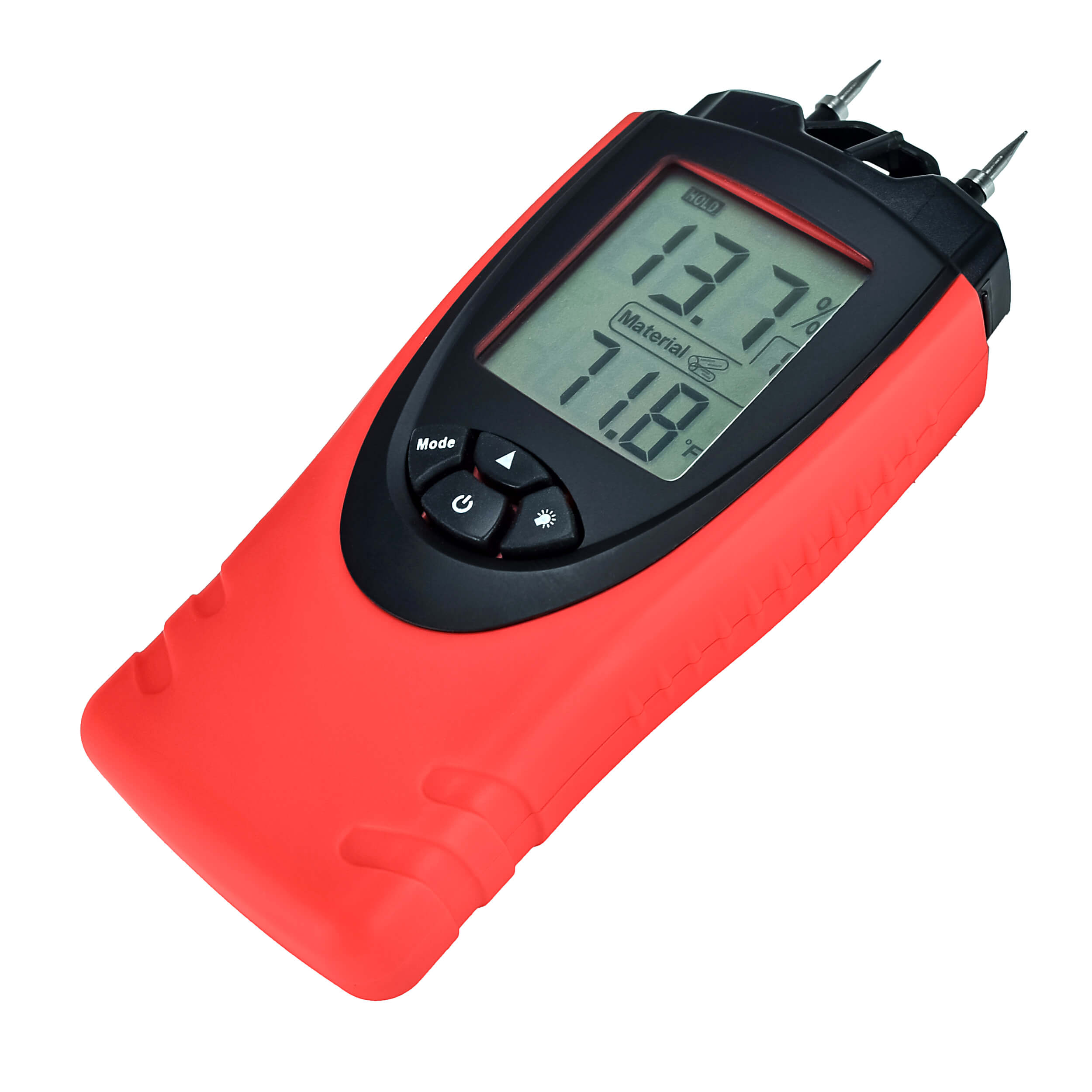The Science Behind Moisture Meters: How They Work and Why They're Essential
The Science Behind Moisture Meters: How They Work and Why They're Essential
Blog Article
Look Into the Globe of Dampness Meters: Every Little Thing You Required to Know
In the world of wetness meters lies a globe of precision and usefulness that usually goes undetected. Understanding just how moisture meters operate, the different kinds available, and their varied uses can lose light on their value in guaranteeing top quality and effectiveness.
How Wetness Meters Work
Dampness meters operate by gauging the electrical conductivity or capacitance of products to figure out the moisture web content present - Moisture Meter. These meters are very useful tools throughout various markets, including building, agriculture, and woodworking. By utilizing different techniques such as pin-type or pinless modern technology, moisture meters supply exact readings that assist professionals make notified choices
Pin-type moisture meters work by inserting the sharp pins into the material being checked. On the various other hand, pinless wetness meters utilize electro-magnetic signals to check a bigger location without triggering any kind of damages to the product's surface area.
No matter of the approach made use of, dampness meters play a crucial role in avoiding concerns such as mold and mildew development, structural damage, or product defects caused by excess moisture. Recognizing just how these meters job is crucial for making certain the top quality and honesty of products in different applications.
Sorts Of Moisture Meters
Provided the vital role dampness meters play in different industries, it is important to recognize the different kinds offered to experts for precisely evaluating dampness levels. There are primarily 2 main kinds of moisture meters: pin-type and pinless wetness meters.
Pin-type wetness meters utilize 2 pins that are put right into the product being examined to gauge the electrical resistance in between them. This approach is typically made use of for wood, drywall, and various other building products. Pin-type meters provide specific readings at certain midsts, making them excellent for identifying dampness gradients.
On the other hand, pinless dampness meters use electro-magnetic sensor plates to scan a bigger area of the product without causing any type of damages. This type is appropriate for promptly scanning big locations and is commonly utilized for flooring, walls, and ceilings. Pinless meters are hassle-free for taking readings on finished surface areas without leaving any kind of noticeable marks.
Both kinds of moisture meters have their benefits and are chosen based upon the details requirements of the task handy. Understanding the differences between these kinds is important for experts to make exact dampness assessments.
Applications Across Industries
Building professionals depend on dampness meters to evaluate the dampness degrees in building products like drywall, concrete, and wood, which is essential for keeping structural stability continue reading this and protecting against concerns like rot or mold. The flooring market uses moisture meters to determine the wetness material in subfloors prior to setting up various flooring coverings, stopping expensive damages due to excess wetness. In the food industry, dampness meters are made use of to keep an eye on and control moisture degrees in items such as grains, nuts, and dried out fruits to keep quality and high quality.
Tips for Using Moisture Meters
Make use of the dampness meter's calibration settings to guarantee accurate analyses when gauging the wetness content in various products. Furthermore, make sure the meter is set to the proper wetness variety for the material you are measuring to get the most specific results.

When utilizing a pin-type wetness meter, place the pins to the suitable depth suggested for the material being evaluated. This guarantees that the moisture analyses are extracted from the right deepness within the material, providing an extra exact depiction of its wetness material. For pinless moisture meters, bear in mind to preserve appropriate contact with the product's surface area to get dependable analyses.

Regularly examine and replace the batteries in your dampness meter to stop incorrect analyses due to reduced power. When not in usage to prolong its life-span and maintain its precision, Shop the meter in a risk-free and completely dry area. By following these pointers, you can take full advantage of the performance of your wetness meter and get precise wetness web content measurements throughout different materials.

Maintenance and Calibration
To make certain the accuracy of moisture material dimensions, normal maintenance and calibration of the wetness meter are crucial steps in its proper functioning. Calibration adjusts the moisture meter to make sure that it gives trustworthy and regular results.
Calibration should be performed periodically, specifically if the dampness meter is made use of regularly or in essential applications where specific dimensions are needed. By adjusting the wetness and maintaining meter regularly, customers can rely on the accuracy of the moisture web content dimensions acquired.
Conclusion
Finally, wetness meters play a vital function in various sectors by precisely measuring the dampness material of materials. Recognizing exactly how these gadgets work, the various types readily available, and appropriate maintenance and calibration are crucial for acquiring dependable outcomes. Whether in farming, building, or production, the usage of moisture meters assists ensure quality assurance and performance in processes.
Building and construction experts rely on wetness meters to analyze the moisture degrees in structure materials like timber, concrete, and drywall, which is important for keeping structural webpage honesty and see page stopping concerns like rot or mold. The flooring market makes use of moisture meters to determine the dampness web content in subfloors before setting up different flooring treatments, avoiding expensive damages due to excess wetness.Utilize the dampness meter's calibration settings to make sure exact analyses when measuring the moisture material in different products. By adhering to these pointers, you can make best use of the efficiency of your dampness meter and get precise moisture content measurements across different materials.
In final thought, wetness meters play a vital duty in numerous sectors by properly gauging the wetness content of products.
Report this page